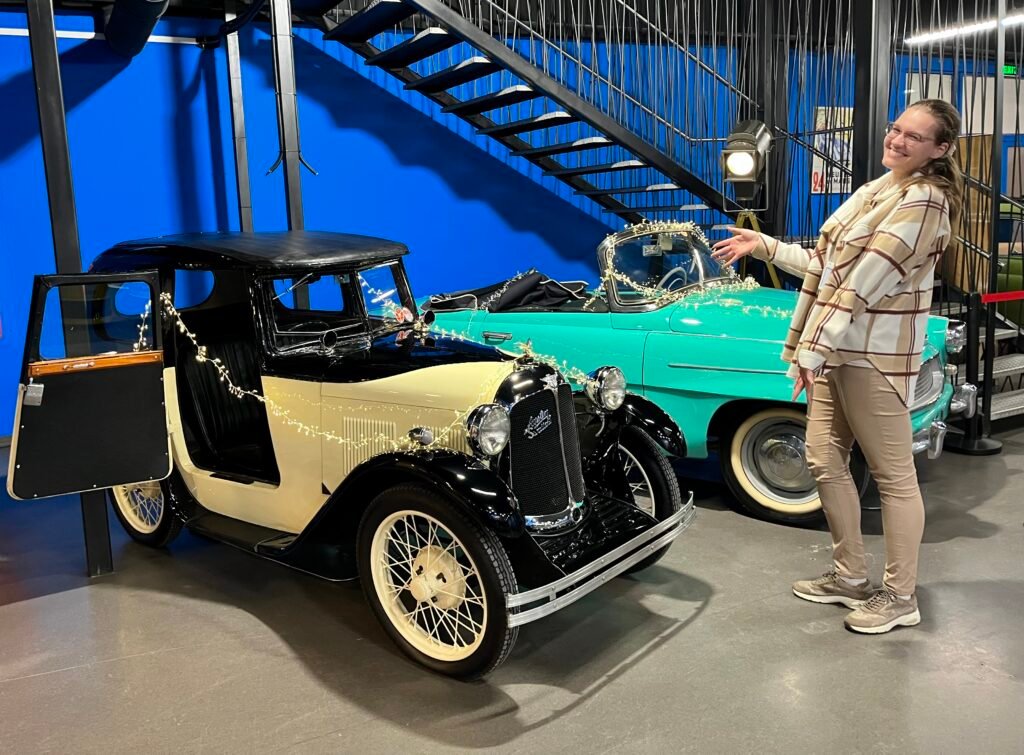365 DAILY NEWSLETTER
AUSTIN 7 SWALLOW - 1931

03.12.2023
In Germany it was known as the Dixi, later it became BMW’s first car, and in the USA it was produced as the American Austin and later as the Bantam. The Dalai Lama also owned such a car.
The Austin 7 Swallow was a small economy car produced by Austin in the UK between 1923 and 1939. The car’s popularity was similar to that of the US-made Model T Ford, and it replaced the British economy and motor cars of the early 1920s. The name of the car refers to the body designed by the “Swallow Sidecar Company”, founded by the famous British car designer William Lyons, which was fitted to the Austin 7. The two-door series of the car was available as a tourer, saloon, convertible and coupe, and the three-door version was available as a van. The Swallow was extremely popular with its two-tone color scheme and styling befitting the more expensive cars of the past, as well as its low cost (£175), and was followed in 1928 by another saloon version: the Austin 7 Swallow Saloon.
In addition to building complete cars, Austin also made the chassis of its popular small car, the Seven, available to companies specializing in body building. By the end of the 1920s, this market accounted for a significant part of total production. Probably the best known car with this bodywork was that of Blackpool’s Swallow. The two-seater touring car was introduced in 1927, followed a year later by this curved saloon.
Swallow was founded in 1922 by William Lyons and William Walmsley as a manufacturer of motorcycle sidecars. The company later produced bodies for Morris, Swift and Standard chassis, as well as the Austin Seven. Production moved to Coventry in 1928. From 1931, it produced cars under the brand name Swallow SS, and finally in 1945 it became Jaguar Cars Ltd.
Until the First World War, Austin produced mainly large cars, but in 1909 a small single-cylinder car was sold, built by Swift of Coventry, called the Austin 7 hp. After that, they returned to bigger cars.
In 1920, Sir Herbert Austin began working on the concept of a smaller car, primarily to meet the needs of young families who wanted an affordable car. This idea was encouraged by the horsepower tax introduced in 1921. Its design concept was a departure from the company’s conservative automotive history, and Austin attracted significant opposition from the board and creditors. With the company in bankruptcy, Austin decided to undertake the project himself and in 1921 hired an 18-year-old draftsman, Stanley Edge, from Austin’s factory in Longbridge, Birmingham, to help draw up detailed plans. This work was done in the pool room of Austin Lickey’s Grange home.
Edge convinced Austin to use a small four-cylinder engine. The original side valve engine had a displacement of 696 cc (55 mm x 77 mm) producing 7.2 bhp RAC, a cast cylinder block with a removable head and mounted on an aluminum crankcase. The crankshaft used one roller and two ball bearings, and the big shaft ends were splash-lubricated. Edge also designed other mechanical components such as the three-speed transmission and clutch unit. Austin was largely responsible for the design of the Seven, which is said to have been influenced by the design of the Peugeot Quadrilette. The design of the “A” frame chassis is believed to have been influenced by the design of an American truck used at the Longbridge factory in the early 1920s.
The design was completed in 1922 and three prototypes were built in a special area of the Longbridge factory and announced to the public in July 1922. Austin invested a large amount of his own money in the design and patented many of his innovations in his own name. In return for his investment, he received a royalty of two guineas for each car sold.
We are waiting for you tomorrow too, this time with Volvo P1800 interesting facts.
Subscribe to our newsletter
Provide your e-mail address and click the button below to receive special deals and premium offers



